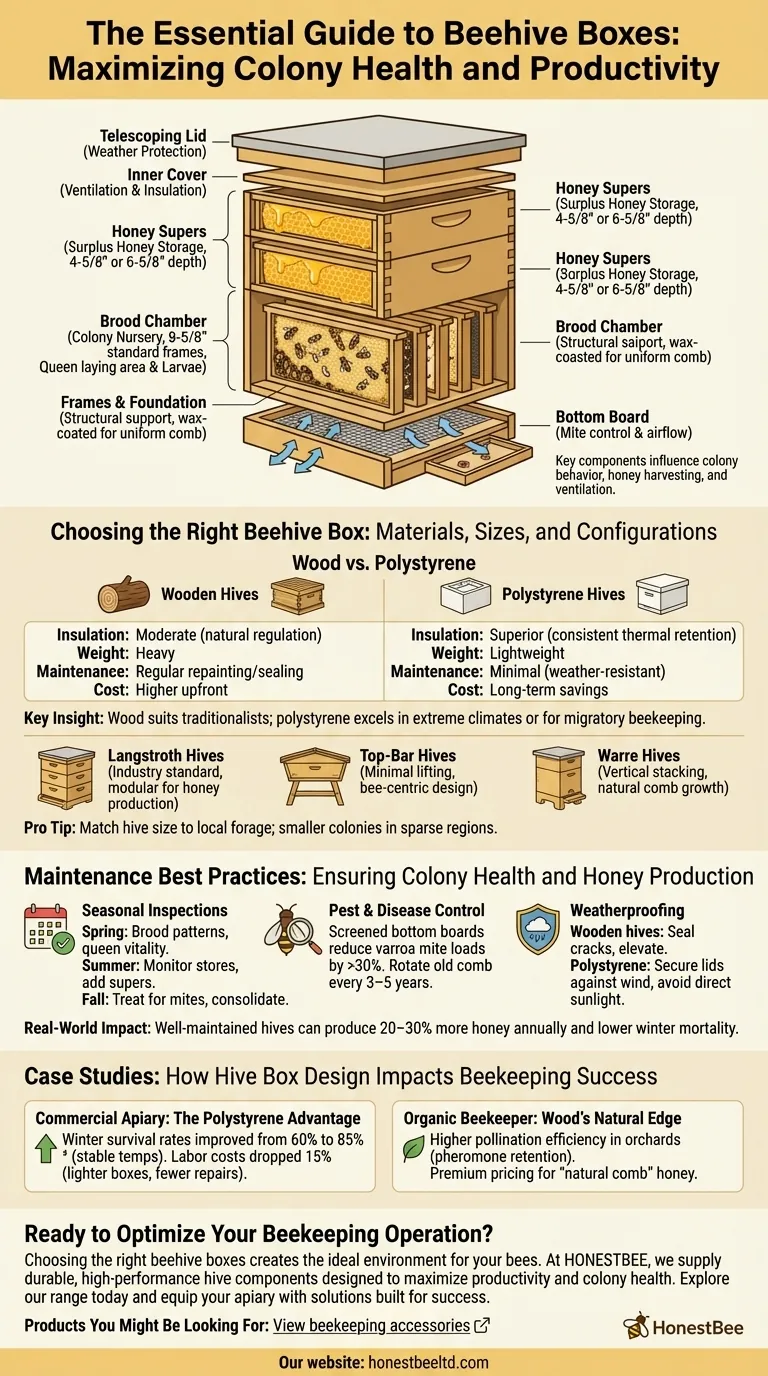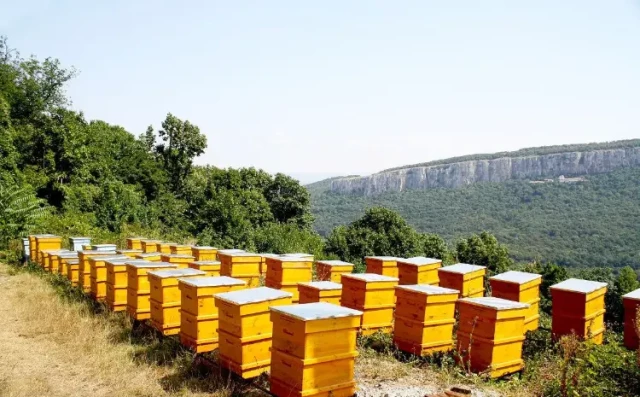Beekeeping success starts with the right foundation—your beehive boxes. Whether you're a commercial apiary or a distributor supplying beekeeping equipment, selecting and maintaining the optimal hive design directly impacts colony health, honey production, and operational efficiency. This guide breaks down the anatomy, selection criteria, and maintenance practices that help beekeepers create thriving environments for their bees.
Anatomy of a Beehive Box: Components and Functions
A beehive box is more than a container—it’s a carefully engineered ecosystem. Understanding its core components ensures you can evaluate quality and functionality:
- Brood Chamber: The colony’s nursery, where the queen lays eggs and worker bees raise larvae. Depth matters; standard 9-5/8" frames support robust brood development.
- Honey Supers: Shallow boxes (4-5/8" or 6-5/8") added during nectar flows to store surplus honey.
- Frames & Foundation: Provide structural support for comb building. Wax-coated foundations encourage uniform comb, reducing cross-combing chaos.
- Inner Cover & Telescoping Lid: Regulate ventilation and protect against weather. Proper airflow prevents condensation, a common winter hazard.
- Bottom Board: Screened variants enhance airflow and mite control; solid boards offer insulation in colder climates.
Why does this matter? Each element influences colony behavior. For example, mismatched box sizes can disrupt honey harvesting, while poor ventilation fosters mold growth.
Choosing the Right Beehive Box: Materials, Sizes, and Configurations
Material Showdown: Wood vs. Polystyrene
Research shows material choice affects temperature stability, durability, and beekeeper workload:
| Factor | Wooden Hives | Polystyrene Hives |
|---|---|---|
| Insulation | Moderate (natural regulation) | Superior (consistent thermal retention) |
| Weight | Heavy (harder to transport) | Lightweight (easy handling) |
| Maintenance | Regular repainting/sealing | Minimal (weather-resistant) |
| Cost | Higher upfront | Long-term savings |
Key Insight: Wood suits traditionalists prioritizing natural aesthetics, while polystyrene excels in extreme climates or for migratory beekeeping.
Sizing and Configurations
- Langstroth Hives: The industry standard, modular for scalability. Ideal for honey production but requires precise frame spacing.
- Top-Bar Hives: Lower honey yields but minimal heavy lifting. Popular among hobbyists favoring bee-centric designs.
- Warre Hives: Vertical stacking mimics natural comb growth. Best for hands-off beekeepers; less compatible with extractors.
Pro Tip: Match hive size to your local forage. In sparse regions, smaller colonies may thrive better.
Maintenance Best Practices: Ensuring Colony Health and Honey Production
-
Seasonal Inspections
- Spring: Check for brood patterns and queen vitality.
- Summer: Monitor honey stores and add supers before nectar flows peak.
- Fall: Treat for mites and consolidate boxes for winter.
-
Pest & Disease Control
- Screen bottom boards reduce varroa mite loads by over 30%.
- Rotate old comb (replace every 3–5 years) to prevent pathogen buildup.
-
Weatherproofing
- Wooden hives: Seal cracks with non-toxic paint; elevate to prevent rot.
- Polystyrene: Secure lids against wind; avoid direct sunlight to prevent warping.
Real-World Impact: A well-maintained hive can produce 20–30% more honey annually while lowering winter mortality rates.
Case Studies: How Hive Box Design Impacts Beekeeping Success
Commercial Apiary: The Polystyrene Advantage
A Midwest beekeeper switched to polystyrene hives and reported:
- Winter survival rates improved from 60% to 85% due to stable internal temps.
- Labor costs dropped 15% from reduced repairs and lighter boxes.
Organic Beekeeper: Wood’s Natural Edge
A small-scale producer using cedar hives noted:
- Higher pollination efficiency in orchards, possibly linked to pheromone retention in wood.
- Premium pricing for "natural comb" honey offset higher maintenance costs.
Ready to Optimize Your Beekeeping Operation?
Choosing the right beehive boxes isn’t just about equipment—it’s about creating the ideal environment for your bees to thrive. At HONESTBEE, we supply beekeepers and distributors with durable, high-performance hive components designed to maximize productivity and colony health.
Explore our range today and equip your apiary with solutions built for success.
Products You Might Be Looking For:
Visual Guide

Related Products
- Australian Langstroth Beehive Boxes for Beekeeping Wholesales
- Langstroth Bee Hives Bee Keeping Box for Beginners Beekeeping
- Professional Insulated Plastic Bee Hives
- Wholesales Dadant Size Wooden Bee Hives for Beekeeping
- HONESTBEE Professional Long Handled Hive Tool with Precision Cutting Blade
Related Articles
- How Medium Boxes Make Beekeeping Easier While Protecting Your Hives
- When Shallow Hive Boxes Outperform Deep Supers: Niche Applications in Modern Beekeeping
- How Smaller Nuc Box Frames Improve Brood Health Through Thermal Regulation
- How to Build and Sustain a Thriving Nucleus Colony: A Beekeeper’s Guide
- Plastic Bee Hives: A Smart Investment for Modern Beekeepers




















